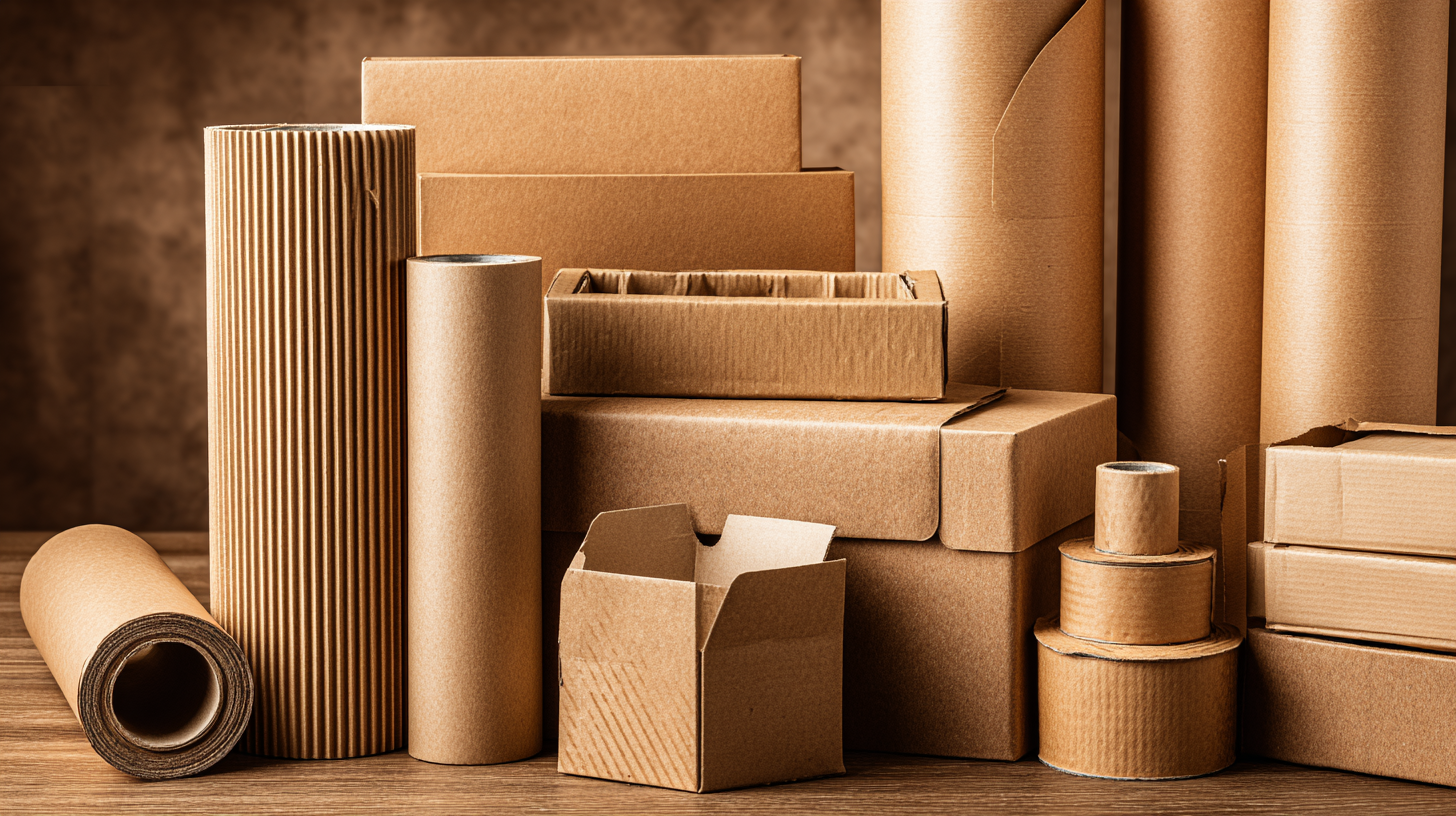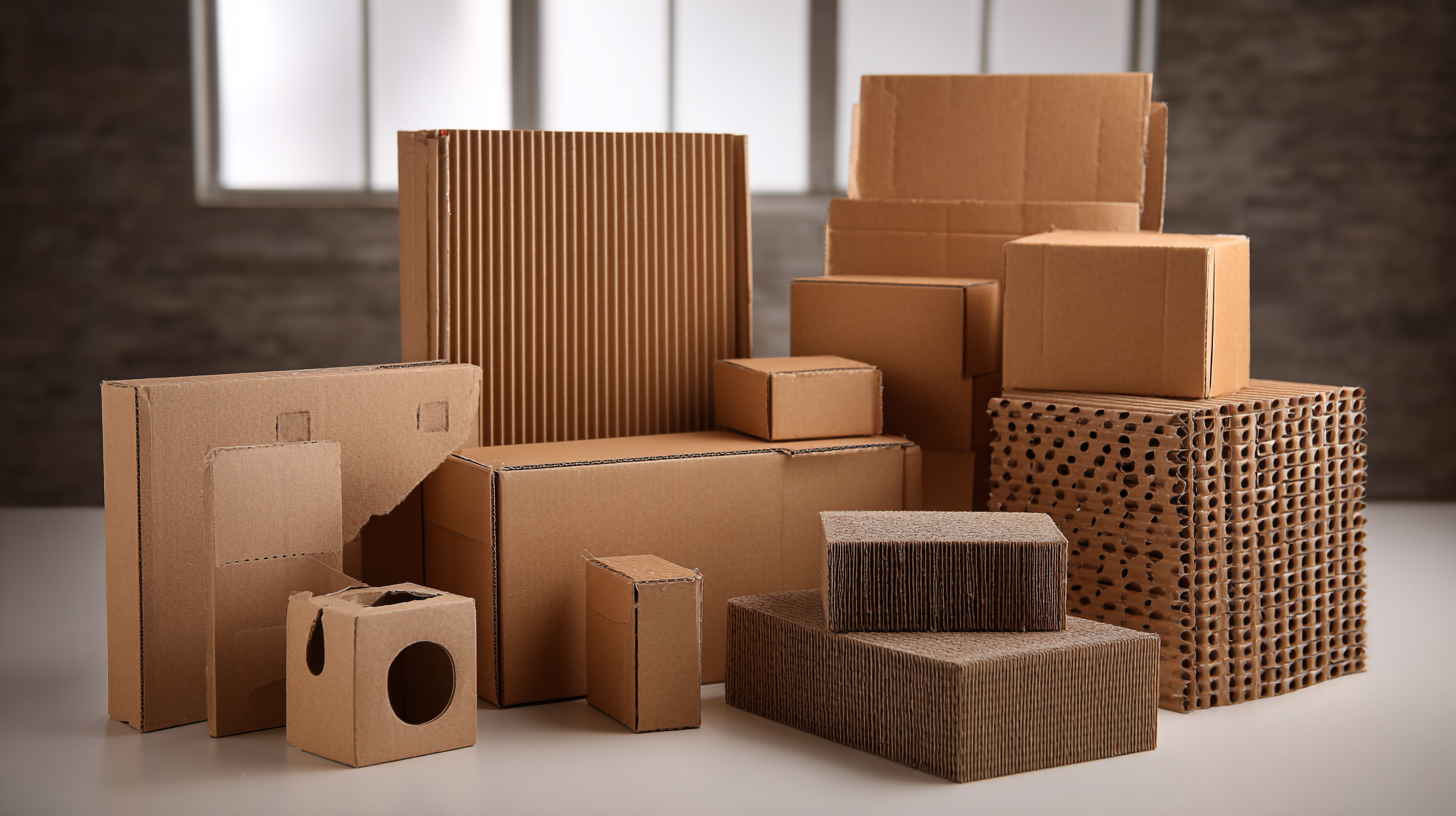5 Fascinating Facts About Cardboard Packaging You Never Knew
 Cardboard packaging is an indispensable part of our daily lives, often overlooked despite its significant impact on the environment and the economy. In this article, we will explore five fascinating facts about cardboard packaging that reveal its versatility, sustainability, and functionality. From its origins in protecting fragile goods to its role in modern e-commerce, cardboard packaging not only serves as a reliable means of transport but also contributes to reducing carbon footprints through its recyclable nature.
Furthermore, advancements in design and material science have led to innovative uses that enhance both aesthetics and practicality. As we delve deeper into these intriguing aspects, you'll discover that cardboard packaging is more than just a simple box; it is a beacon of innovation and sustainability that shapes the way we consume and think about packaging today.
Cardboard packaging is an indispensable part of our daily lives, often overlooked despite its significant impact on the environment and the economy. In this article, we will explore five fascinating facts about cardboard packaging that reveal its versatility, sustainability, and functionality. From its origins in protecting fragile goods to its role in modern e-commerce, cardboard packaging not only serves as a reliable means of transport but also contributes to reducing carbon footprints through its recyclable nature.
Furthermore, advancements in design and material science have led to innovative uses that enhance both aesthetics and practicality. As we delve deeper into these intriguing aspects, you'll discover that cardboard packaging is more than just a simple box; it is a beacon of innovation and sustainability that shapes the way we consume and think about packaging today.
The Evolution of Cardboard Packaging: From Ancient Times to Modern Use
The evolution of cardboard packaging dates back to ancient times, with roots traced to the 19th century when it first gained popularity in Europe. Originally used for making boxes and cartons, its lightweight and durable nature quickly established it as a go-to material for distributing a variety of goods. According to a recent report by Smithers Pira, the global demand for cardboard packaging is projected to reach approximately 500 million tons by 2024, reflecting its indispensable role in modern commerce.
With the surge in e-commerce, cardboard packaging has adapted significantly. Modern designs embrace functionality, ensuring that products are securely packed for transport, which minimizes damage and upholds customer satisfaction. A study by the Paper and Plastics Packaging Environmental Council highlights that cardboard can be recycled up to seven times, which not only supports sustainability but also reduces the carbon footprint associated with packaging.
**Tips:** When selecting cardboard packaging, consider the thickness and durability based on the product's weight and fragility. Also, look for options that use recycled materials to further enhance your sustainability efforts. Always ensure that your packaging reflects your brand values, as customers increasingly prefer eco-friendly solutions.

Innovative Designs: How Cardboard Packaging Enhances Product Appeal
Cardboard packaging has undergone a remarkable transformation with innovative designs that significantly enhance product appeal. According to a 2022 report by Smithers Pira, over 60% of consumers are influenced by packaging aesthetics when making purchasing decisions. The use of striking graphics, textures, and unique structural designs not only attracts attention on crowded shelves but also creates a memorable unboxing experience that can lead to increased brand loyalty.
The versatility of cardboard allows for creativity in design, making it an ideal medium for brands aiming to stand out. For instance, brands can incorporate eco-friendly materials and stylish die-cut shapes that reflect their commitment to sustainability while enhancing visual intrigue. A study by the Paper and Paperboard Packaging Environmental Council (PPEC) indicated that 73% of consumers are more likely to purchase products packaged in sustainable materials. As brands continue to innovate in cardboard packaging, they not only capture the consumer's eye but also signal their values and commitment to environmental responsibility, reinforcing a positive connection with their audience.
5 Fascinating Facts About Cardboard Packaging
Sustainability in Cardboard: The Environmental Benefits of Choosing Cardboard
Cardboard packaging stands out as a champion of sustainability, offering numerous environmental benefits that many people might not be aware of. One of the primary advantages is its ability to be recycled multiple times without significant degradation in quality. This recyclability reduces the strain on natural resources, as recycled cardboard requires less energy and water to process compared to producing new cardboard from trees. By choosing cardboard packaging, consumers actively contribute to a circular economy that minimizes waste.
Additionally, cardboard is biodegradable, meaning it breaks down naturally over time, leaving no lasting impact on the planet. While plastic packaging can take centuries to decompose, cardboard typically breaks down within a few months under the right conditions. This property not only helps reduce landfill waste but also helps in enriching soil as it decomposes. Furthermore, the production of cardboard is generally more environmentally friendly, as it often utilizes sustainable forestry practices and renewable resources, making it a preferred choice for eco-conscious consumers seeking to make responsible decisions in their purchasing habits.
5 Fascinating Facts About Cardboard Packaging You Never Knew
| Fact | Description | Environmental Benefit |
|---|---|---|
| Biodegradable Material | Cardboard decomposes in natural environments within a few months. | Reduces landfill waste and promotes soil health. |
| Recyclability | About 70% of cardboard packaging is recycled in the U.S. | Conserves resources and reduces need for virgin materials. |
| Renewable Sources | Made from trees, which can be sustainably managed. | Helps maintain forest ecosystems when sustainably sourced. |
| Energy Efficient Production | Cardboard manufacturing uses less energy compared to plastic or metal. | Lowers overall carbon footprint in packaging solutions. |
| Lightweight yet Strong | Cardboard is lighter than many packing materials, reducing shipping costs. | Decreases fuel consumption and greenhouse gas emissions during transport. |
The Science Behind Cardboard Strength: How It Protects Your Products
Cardboard packaging has long been celebrated for its strength and versatility, which are essential characteristics that protect products during storage and transport. The science behind cardboard's strength lies primarily in its structure. Composed of layers of fibers derived from trees, cardboard is designed to provide resilience and cushioning. The fluted layers trapped between flat liners give cardboard its rigidity and ability to absorb shocks, making it an excellent choice for protecting fragile items.
Recent advancements in packaging technologies highlight innovations that enhance the environmental sustainability of cardboard packaging. The development of bio-based barrier coating materials provides a promising alternative to traditional plastic coatings, significantly reducing the carbon footprint associated with food packaging. These advancements not only bolster the strength of cardboard against various environmental factors but also align with the growing demand for sustainable packaging solutions. As cardboard packaging evolves, it continues to offer robust protection for a diverse range of products while supporting eco-friendly initiatives in the industry.

Creative Uses for Cardboard Packaging Beyond Shipping and Storage
Cardboard packaging is often seen merely as a means to an end—protecting products during shipping and storage. However, its versatility extends far beyond these conventional uses. For instance, many creatives have turned to cardboard as a sustainable medium for art and design projects. From intricate sculptures to elaborate sets for theater productions, cardboard allows artists to explore their creativity while being mindful of the environment. It can easily be cut, shaped, and painted, making it an accessible material for those looking to produce unique works without significant expense.
Additionally, cardboard packaging has found a second life in home organization and decor. DIY enthusiasts often repurpose cardboard boxes into stylish storage solutions, such as decorative bins or drawer organizers. With a bit of paint and creativity, these once-disposable items can transform cluttered spaces into organized, aesthetically pleasing areas. Furthermore, cardboard can be used to craft functional items like furniture or children’s playhouses, demonstrating that with a little ingenuity, what is typically discarded can be transformed into something practical and imaginative. This shift towards creative uses highlights cardboard packaging's potential as a resource in various artistic and functional applications.
Related Posts
-

7 Innovative Cardboard Packaging Solutions That Will Transform Your Supply Chain
-

7 Reasons Why Choosing the Right Postal Tube Size Matters
-

5 Essential Tips to Maximize Your Sourcing Strategy for Carton Tubes
-

Essential Checklist for Choosing the Right A1 Postal Tubes: Key Industry Insights and Best Practices
-

7 Essential Tips for Choosing the Right Postal Tube Sizes
-

5 Essential Tips for Choosing the Right Heavy Duty Cardboard Tubes